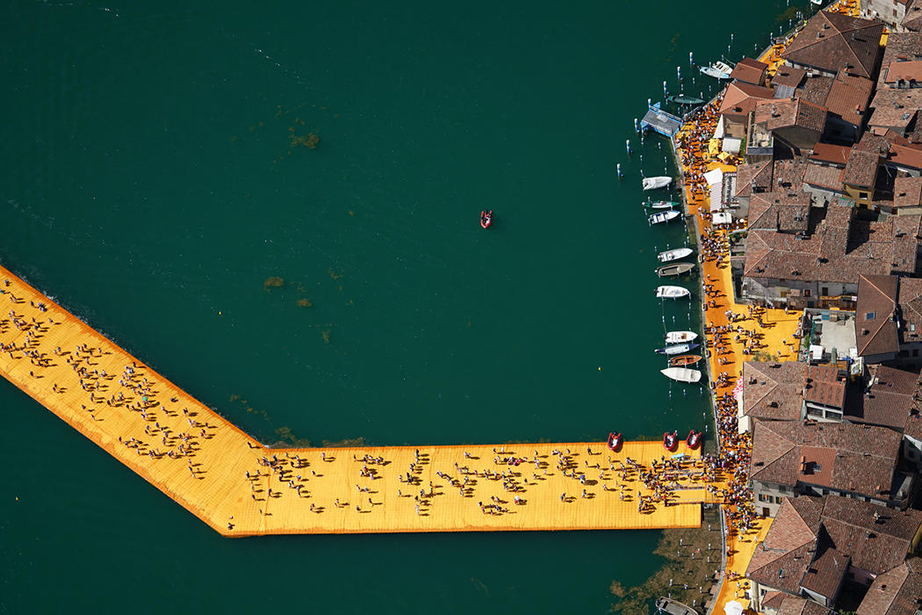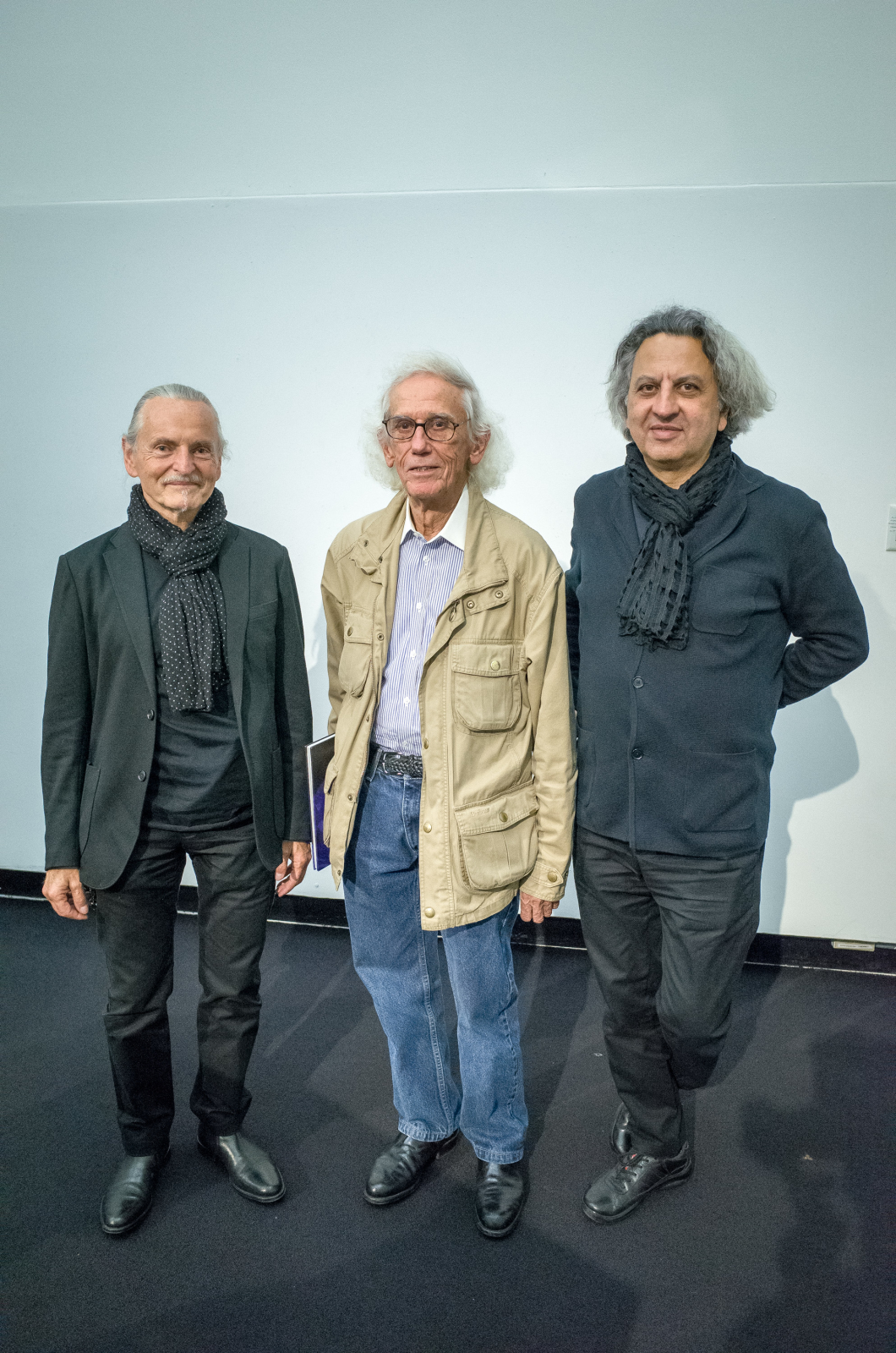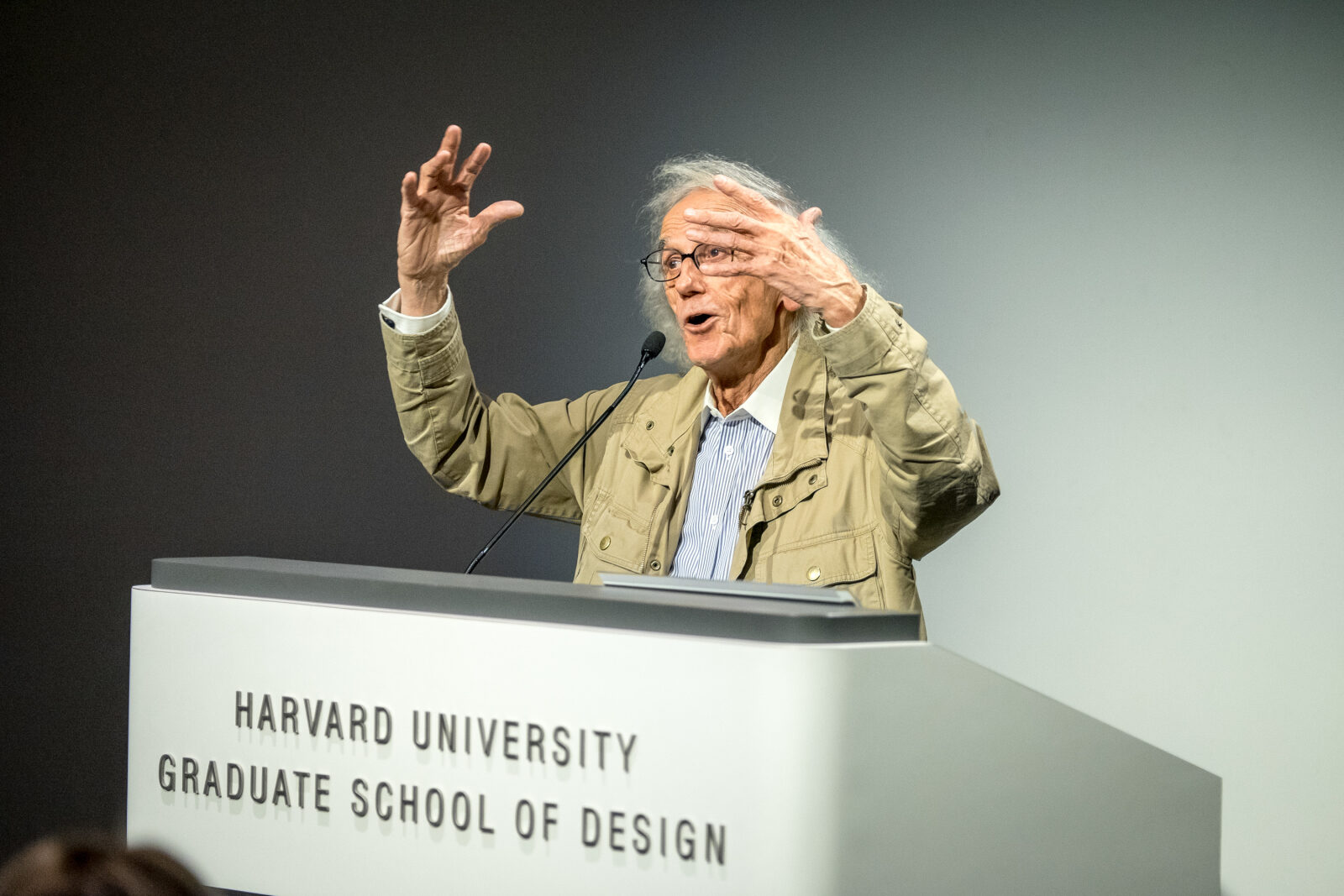“All of our projects are absolutely irrational with no justification to exist,” artist Christo declared to an overflow crowd at the Harvard Graduate School of Design on Thursday, October 27. “Nobody needs a running fence or surrounded islands,” he continued, in reference to two of his most discussed public works: “Running Fence” (1974), a 16-foot-high fabric gate that stretched across nearly 25 miles of Northern California; and “Surrounded Islands” (1980-83), for which 11 islands in Biscayne Bay were surrounded with 6.5 million square feet (603,870 square meters) of pink, woven-polypropylene fabric.
What is, then, at the core of the impetus for the projects and musings of Christo and Jeanne-Claude, his wife and lifelong creative partner who died in 2009?
An “unstoppable urge to create,” Christo told the audience—more specifically, an urge to create works that a viewer must visit in person, that are physical and sensorial, that are impermanent and thus impossible to be owned or possessed.
Christo discussed three of these works during his October 27 lecture. Among them was “The Floating Piers,” Christo and Jeanne-Claude’s most recently finished work. “Floating Piers” was conceived in 1970 yet came to fruition only in the summer of 2016. The work comprises a two-mile-long, 50-foot-wide runway of yellow fabric that floats across Lake Iseo in northern Italy.
During the two weeks in which it was open to the public this past summer, about 80,000 people visited each day. Many described the experience as akin to walking on water.

Alongside reflections on “Floating Piers” and his opus writ large, Christo also previewed two upcoming projects: “Over the River,” for the Arkansas River in Colorado, and “The Mastaba,” for the United Arab Emirates, which has been in conception since the 1970s. Both were planned with Jeanne-Claude, whom Christo continues to fundamentally credit in his projects.
One thread connecting the projects Christo discussed was the deep complexity of each, both technically and representationally.
“Floating Piers” called for 220,000 tiny, custom-made cubes; 195 anchors, placed by deep-sea divers; and permission from the Italian government, among other obstacles. As noted on Christo’s website, “Running Fence” required 42 months of collaborative efforts, 18 public hearings, three sessions at the Superior Courts of California, and the drafting of a 450-page environmental impact report. Amid these technicalities, Christo and Jeanne-Claude do not accept grants or sponsorships of any kind for their works, paying the entirety of the costs—often in the tens of millions—themselves through the sale of Christo’s drawings and early works.
These challenges, he noted, do not restrain his urge to create.
“Because I’m a very optimistic person, I think everything will work out,” he said. “I know we live in difficult times, but if I’m not an optimist, I would never do this work.”
Christo was introduced by Krzysztof Wodiczko, professor in residence of art, design and the public domain at the GSD. Christo’s lecture was cosponsored by the Harvard University Committee on the Arts (HUCA), and was part of the GSD’s Rouse Visiting Artist Program.
To learn more about Christo’s talk, read the Harvard Gazette‘s coverage.

